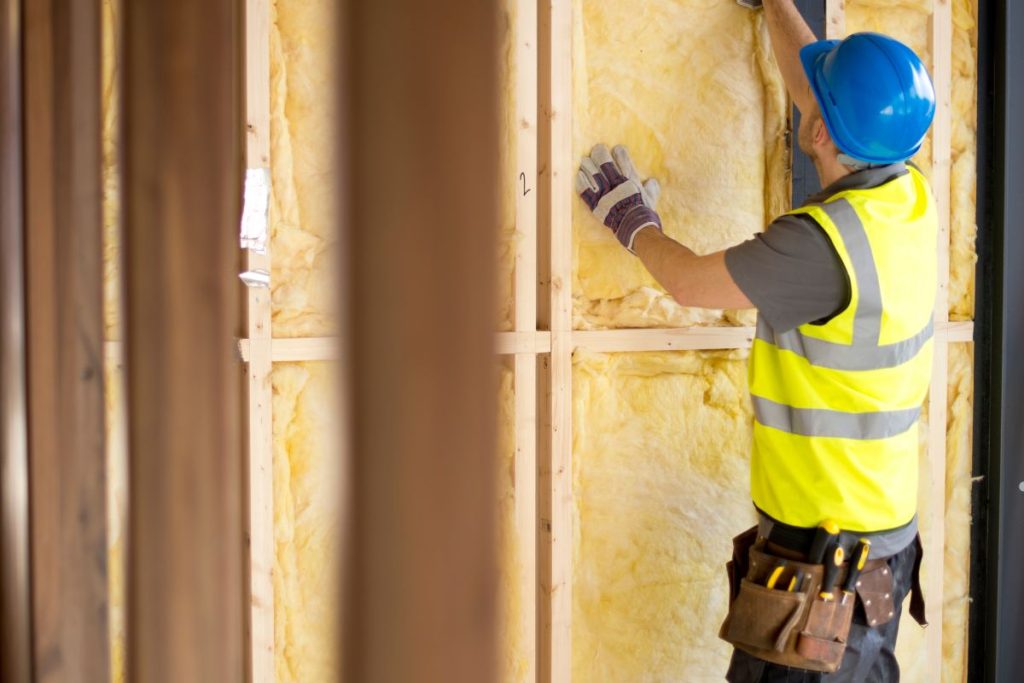
Choosing the right insulation is key to a comfortable and energy-efficient home. The most common types of materials used for wall insulation in US homes include fiberglass (batts and blown-in), cellulose (often from recycled paper), spray polyurethane foam (open-cell and closed-cell), rigid foam boards (like EPS, XPS, and Polyiso), and mineral wool (rock or slag wool). Each material offers distinct advantages in terms of thermal performance (R-value), cost, installation method, and properties like moisture resistance and sound dampening. Understanding these options helps homeowners make the best choice for their specific needs and climate.
Why Wall Insulation Matters for Your Home
Proper wall insulation isn’t just an add-on—it’s essential for a high-performing home. Acting as a thermal barrier, it slows heat transfer, keeping warmth inside during winter and blocking excess heat in the summer. This leads to lower energy consumption, reduced utility bills, and a more comfortable indoor environment with consistent temperatures year-round. Beyond energy efficiency, quality insulation also helps minimize outside noise, creating a quieter, more peaceful home. Investing in the right insulation enhances your home’s comfort, efficiency, and overall value. We specialize in professional wall insulation services to improve your home’s performance.
Fiberglass Insulation: The Popular Choice

Fiberglass remains one of the most widely used insulation materials across the USA, primarily due to its affordability and ease of availability. It’s made from extremely fine glass fibers and comes in two main forms: pre-cut batts or rolls designed to fit standard wall cavity spacing, and loose-fill (blown-in) fiberglass. Batts are common for new construction or major renovations where wall cavities are open. Blown-in fiberglass is excellent for adding insulation to existing walls or filling irregular spaces. While cost-effective and non-combustible, fiberglass can be an irritant during installation (requiring protective gear) and its thermal performance can decrease if compressed or exposed to moisture. Typical R-values range from R-3.1 to R-4.3 per inch.
Cellulose Insulation: The Eco-Friendly Option
Cellulose insulation is favored for its environmental credentials, often composed of up to 85% recycled paper products (like newspaper), treated with non-toxic borates for fire and insect resistance. It’s most commonly installed as a loose-fill material, blown into wall cavities either densely packed (for new construction or open walls) or through small holes drilled into existing walls. Cellulose excels at filling gaps and conforming around obstacles like wiring and plumbing, reducing air leakage effectively. Its main drawbacks include potential settling over time if not installed densely enough and a higher susceptibility to moisture absorption compared to other types, which can degrade its R-value and potentially lead to mold if not managed. R-values typically range from R-3.2 to R-3.8 per inch. It’s a great choice for homeowners seeking sustainable building materials.
Adding insulation to interior walls is a great way to improve your home’s comfort and reduce noise. The process involves measuring wall cavities, cutting insulation batts (such as fiberglass or mineral wool) slightly larger than the space, fitting them snugly between the studs without compressing them, and sealing any gaps. This DIY project can help minimize sound transfer between rooms and maintain more stable indoor temperatures, creating a quieter and more comfortable living environment. For a detailed step-by-step guide, check out our blog:How to Install Insulation in Interior Walls.
Spray Foam Insulation: High Performance & Air Sealing
Spray Polyurethane Foam (SPF) insulation is a premium option known for its exceptional performance. Applied as a liquid, it expands rapidly to fill every crack and crevice, creating both thermal insulation and a highly effective air barrier in one step. This superior air sealing capability significantly reduces drafts and energy loss compared to materials that allow more air movement. Because it requires specialized equipment and knowledge of chemical mixing ratios, spray foam insulation must be installed by trained professionals. It comes in two main types: open-cell and closed-cell, each with distinct properties.
Open-Cell Spray Foam
Open-cell spray foam has a lower density (around 0.5 pounds per cubic foot) and remains softer and more flexible once cured. Its open-cell structure allows water vapor to pass through, making it vapor-permeable—an advantage in certain climates or wall assemblies to prevent moisture buildup. This insulation offers good thermal performance (R-3.5 to R-3.8 per inch) and excellent sound dampening, though its R-value per inch is lower than closed-cell foam. It’s also more affordable but does not provide added structural rigidity. Call us today to see if open-cell spray foam is the right choice for your home!
Closed-Cell Spray Foam
Closed-cell SPF is denser (around 2.0 pounds per cubic foot) and rigid once cured. Its cells are fully closed and filled with a blowing agent that enhances thermal performance. This results in a much higher R-value, typically ranging from R-6.0 to R-7.0 per inch, making it highly effective in limited spaces. Its closed structure also makes it resistant to moisture absorption and allows it to function as a vapor barrier, which can be crucial in many US climates. Additionally, its rigidity can add some structural strength to wall assemblies. However, it is generally the most expensive insulation option per board foot. Learn more about the differences from trusted sources like the Department of Energy.
Rigid Foam Boards: Versatile Panels
Rigid foam board insulation comes in large, sturdy panels and is made from various plastics, primarily Expanded Polystyrene (EPS), Extruded Polystyrene (XPS), and Polyisocyanurate (Polyiso). These boards offer high R-values per inch (ranging from R-4 to R-6.5+ depending on the type) and are commonly used for exterior wall sheathing (providing a continuous layer of insulation to reduce thermal bridging through studs), basement walls, and sometimes interior applications. EPS is typically the most affordable but has a lower R-value and higher moisture permeability than XPS. XPS (often pink or blue) offers good moisture resistance and compressive strength. Polyiso (often foil-faced) generally provides the highest R-value per inch but can lose some performance in very cold temperatures. Proper sealing at the seams between boards is crucial to prevent air leakage.
Mineral Wool Insulation: Fire and Moisture Resistance
Mineral wool, also known as rock wool or slag wool, is made from spinning molten rock or industrial slag into fine fibers, similar to fiberglass but using different raw materials. It’s available in batts and loose-fill forms. Mineral wool stands out for its exceptional fire resistance (it’s non-combustible and can withstand very high temperatures) and excellent moisture resistance (it doesn’t absorb water and drains easily). It also offers superior sound dampening properties compared to fiberglass. While typically more expensive than fiberglass or cellulose, its durability and resistance properties make it a valuable option, especially where fire safety or moisture management is a high priority. R-values are generally comparable to or slightly better than fiberglass, around R-3.3 to R-4.2 per inch.
Factors to Consider When Choosing Wall Insulation

Selecting the best insulation material involves balancing several factors specific to your home and location:
- Required R-Value: Your local climate dictates the recommended R-value for optimal energy efficiency. Colder regions in the US require higher R-values. Check ENERGY STAR recommendations for your zone.
- Budget: Material costs vary significantly, from affordable fiberglass and cellulose to premium spray foam. Installation costs (DIY vs. professional) also impact the total price.
- Installation Complexity: Batts and boards might be manageable for experienced DIYers in open walls, but blown-in and spray foam applications typically require professional installation for optimal performance and safety. Our professional installation services ensure the job is done right.
- Wall Structure: Existing walls often limit choices to blown-in insulation or injection foam unless undergoing major renovation. New construction offers more flexibility.
- Moisture Concerns: Areas prone to moisture (basements, certain climates) may benefit from moisture-resistant options like closed-cell spray foam, XPS rigid boards, or mineral wool.
- Environmental Impact: If sustainability is a priority, cellulose (high recycled content) or mineral wool (natural materials, durable) might be preferred.
Making the Best Insulation Choice for Your Walls
The best wall insulation depends on your specific needs. Fiberglass and cellulose provide solid performance at an affordable cost, while spray foam offers superior air sealing and thermal resistance at a higher price. Rigid boards work well for continuous exterior insulation, and mineral wool excels in fire and moisture resistance.Consider your climate zone, budget, wall construction, and concerns like moisture or soundproofing when choosing insulation. When properly installed, any of these materials can enhance comfort and lower energy bills for years. Call us today to find the right insulation solution for your home!
Frequently Asked Questions About Wall Insulation Materials
Here are answers to some common questions homeowners have about wall insulation:
What is R-value and why is it important for insulation?
R-value measures an insulation material’s resistance to heat flow. The higher the R-value, the better the material insulates per inch of thickness. Choosing insulation with an appropriate R-value for your climate zone is crucial for maximizing energy savings and maintaining comfortable indoor temperatures. It’s the standard measure of thermal performance used across the insulation industry in the USA.
Can I install wall insulation myself?
Some types of insulation, like fiberglass or mineral wool batts, can potentially be installed by a knowledgeable DIYer, especially in open wall cavities during new construction or remodeling. However, achieving proper installation (avoiding gaps, compression) is critical for performance. Blown-in insulation requires rental equipment and specific techniques for dense packing. Spray foam insulation absolutely requires professional installation due to the chemical handling, specialized equipment, and techniques needed for a safe and effective application. For existing walls, professional installation is almost always recommended for optimal results.
How does my US climate zone affect insulation choice?
The US Department of Energy divides the country into climate zones based on average temperatures. Colder zones (like the Northeast or Upper Midwest) require higher R-values to combat heat loss in winter, while warmer zones (like the South) still need significant R-values to combat heat gain in summer, though perhaps slightly lower than the coldest zones. Your climate zone directly influences the amount (thickness or type) of insulation needed to be effective and cost-efficient. Materials with higher R-values per inch, like closed-cell spray foam or polyiso boards, can be beneficial where space is limited but high thermal resistance is needed.
Are eco-friendly insulation options effective?
Absolutely! Many eco-friendly insulation options are both highly effective and sustainable. Cellulose insulation, made primarily from recycled paper, offers excellent R-value and superior air-sealing when dense-packed. Mineral wool, derived from natural rock and slag, is fire-resistant, durable, and provides strong thermal performance. Other options, such as denim (recycled cotton) and sheep wool insulation, are also available, though they may be less common or slightly more expensive. These sustainable materials often match or even outperform traditional fiberglass in areas like sound dampening (especially with cellulose) while significantly reducing environmental impact. Interested in eco-friendly insulation for your home? Contact us today to explore the best sustainable insulation solutions!
